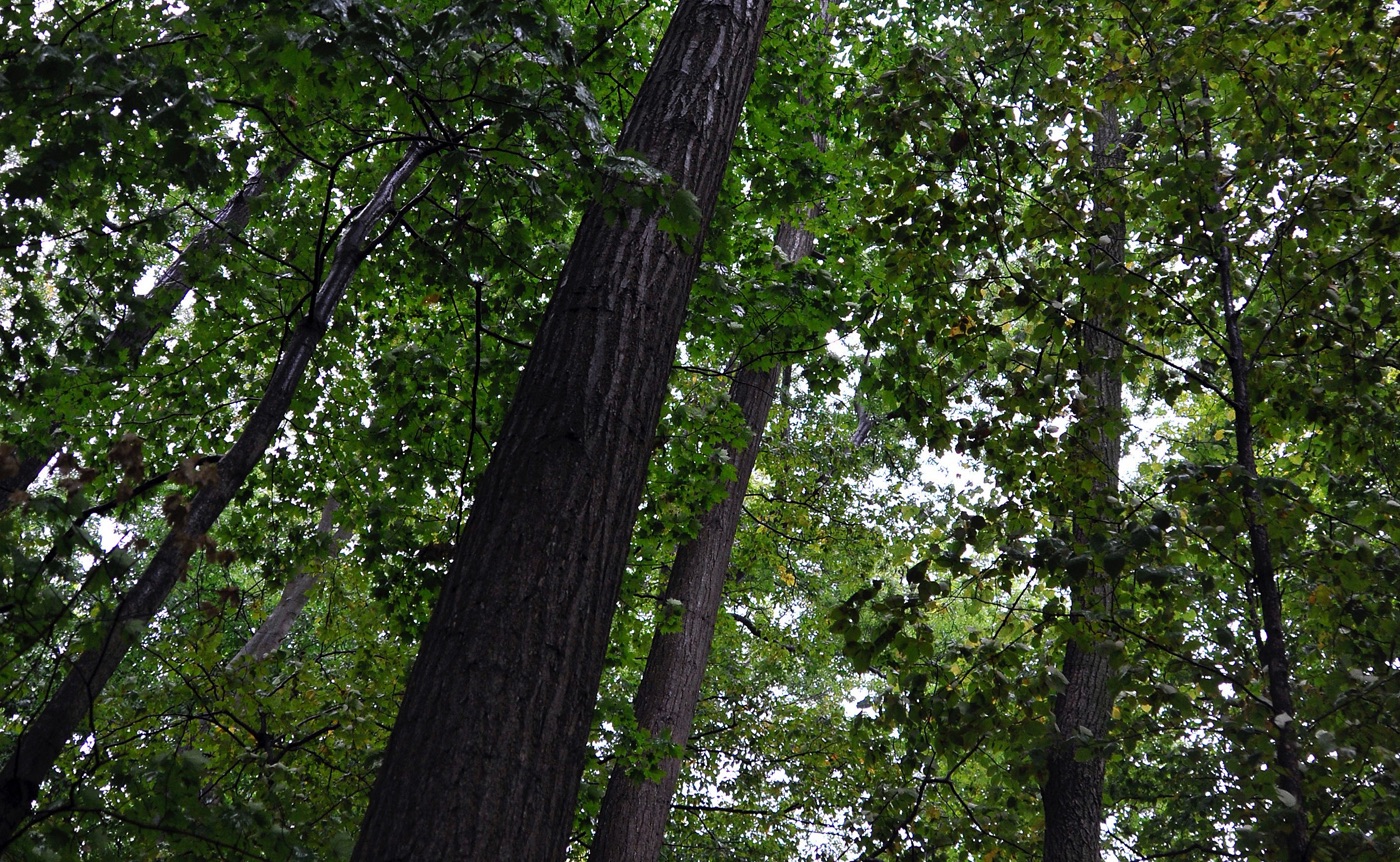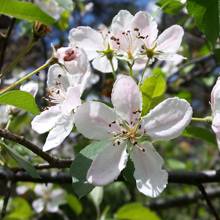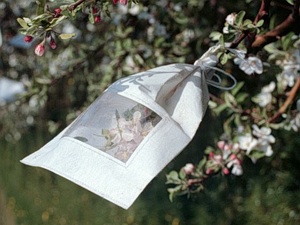Dynamics of Malus (apple) populations in cultivated and natural settings
Sweet crabapples (Malus coronaria):
The sweet crabapple (Malus coronaria) is the only native apple species Canada east of the Rockies. It's Canadian range is restricted to the Carolinian forest zone of Southern Ontario. While this native species is uncommon in Ontario, many of its close relatives have been introduced to Northa America and become common and widespread, growing in orchards, back yards, ornamental plantings, and naturalized in the wild when they escape cultivation ("feral trees"). These include, most commonly, the domestic apple (Malus domestica), and a variety of ornamental crabapple species and hybrids.
We study the impact of these introduced species on the native crabapple populations, with an emphasis on hybridization between the native crabapple (Malus coronaria) and “feral” domestic apples (apples growing wild). Our research has shown that a significant proportion of seeds produced by native crabs are hybrids when domestic apples grow in the same population (Kron and Husband, 2009). We are currently conducting a multi-year study to evaluate the relative fitness of hybrid and non-hybrid trees under natural conditions at the the rare Charitable Resource Reserve in Cambridge, Ontario. We are assessing genetic variation in wild crabs and feral domestic apples and looking for evidence of the movement of domestic apple gens into Native crabapple populations, using genetic markers (microsatellites).
Researchers: Paul Kron (Research Assoc.), Dane Cronin (M. Sc.), Elaina Greaves (M. Sc. candidate)
Genetic diversity and origins of feral domestic apple (M. domestica) populations:
Feral populations of domesticated crops can establish through two non-mutually exclusive pathways: hybridization with native relatives and recruitment of and recombination between known cultivars. The extent and relative importance of these pathways is not known, especially for woody fruit crops. Here, we examine the evolutionary origins of feral populations of Malus domestica (domestic apple) in southern Canada using a population genetic analysis. We characterized genotypes of 578 putative feral apple trees and evaluated them in relation to genotypes of 156 commercial cultivars, 28 ornamental crabapples and 47 native Malus coronaria trees using 14 microsatellite markers. No feral trees were genetic admixtures between domestic and native Malus; however, a minority of trees were admixed with ornamental Malus. Feral trees and commercial cultivars occurred in two major genetic groups and seven subgroups distributed throughout all commercial growing regions. Forty-three cultivars, both heritage and currently grown, were identified as most likely parents, with nine heritage varieties accounting for 67% of parental assignments. We conclude that feral apples in southern Canada are not products of hybridization with native M. coronaria but we cannot exclude ornamental apples as contributing to the naturalization process. Non-hybrid ferals have multiple origins, with a prominent signature of early heritage cultivars. These lineages have spread and coexist throughout Ontario, rather than being derived strictly from local sources.
Researchers: Dane Cronin (M. Sc.), Paul Kron (Research Assoc.)
Ontario Heritage and Feral Apple Project:
Many of these older cultivars have disappeared from our awareness and our grocery stores, and in some cases, may have vanished altogether. Yet, they may have left a distinct imprint in the feral apples of Ontario. The identity of old apple trees in the landscape is also of great interest to many people.
In 2020, we launched the Ontario Heritage and Feral Apple Project. Our goals are:
-Make our cultivar identification tests available to the public
-Expand our genetic database to include more heritage cultivar
-Improve our knowledge about the distribution of abandoned orchards, historic trees, and native crabapples.
Researchers: Paul Kron (Research Assoc.)
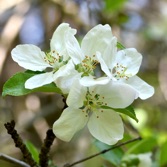
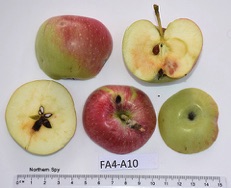
Function of complex reproductive systems in Malus, the apple genus
Plants exhibit many different mechanisms for reproducing, ranging from clonal growth to asexual dispersal propagules, from asexual seed to sexual seed, and from self-fertilization, to cross-fertilization and everything inbetween. Some species contain many of these alternative reproductive strategies within the same species but they are notoriously difficult to study. We have been examining these complex reproductive systems in the genus Malus, the apple genus. Initially, we studied paternity and patterns of pollination within and among cultivars of apples. Our goal was to improve orchard design and apple yield through a better understanding of pollen movement, fertilization patterns and genetic compatibility between cultivars. More recently, our attention has turned to a native species of Malus, sweet crabapple, because of its complex reproductive system and the potential for hybridization from domestic apples. This work has been conducted largely by Paul Kron, a Research Associate in the lab. Working with a new M.Sc. student, Dane Cronin, we are also turning our attention to the identity and reasons for success of naturalized domestic apples which have established populations outside of cultivation
Researchers: Dane Cronin (M.Sc. candidate), Paul Kron (Research Assoc.), Matthew Routley (Ph. D.)
